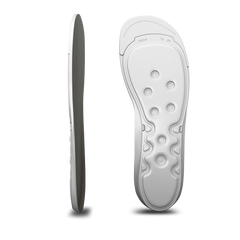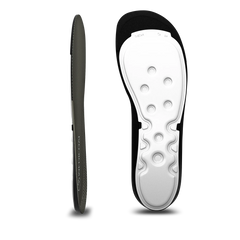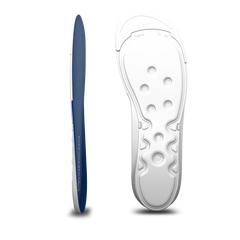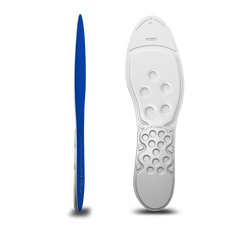Ganglion

Have you discovered a weird clump of connective tissue on your wrist or hand? Does this round structure cause you pain, or painlessly limit the joint mobility? Does it limit you as you go about your everyday activities? Are you concerned about the aesthetic effect of the bulging skin in that area? If so, you may have what’s called a ganglion. A ganglion is an interesting and relatively widespread health problem that can affect a variety of body parts, but often appears around joints and tendons. This article will discuss what a ganglion is, how they form, and the most common treatment methods.
What is a ganglion?
A ganglion, also known as a lump or hygroma, is a benign (non-malignant) tissue structure that grows around joints and tendons. Ganglions are usually small, round cysts or blisters containing a sticky liquid. They can appear in different areas of the body, but in most cases they are found on wrists and arms. But they can also appear on ankles and knees. When they develop on feet, a ganglion can be an unpleasant problem that may cause pain and limit the foot’s mobility. Orthopedic insoles, such as Medicovi H20 brand insoles, may be a useful supplement to foot ganglion treatment.
How does a ganglion form?
The exact causes of the formation of ganglions are not entirely clear, but there are a few theories. One leading theory is that a ganglion forms as a result of degradation or damage to a tendon or joint capsule. This can cause the synovial fluid to build up in a small capsule around a joint cavity, forming a ganglion. Another possible cause of a ganglion developing may be repeated strain or injury to a specific body part, which causes the inflammation or degeneration of the tendon.
Symptoms of a ganglion may include:
A round structure under the skin, which may be elastic or hard.
Pain or pressure around the ganglion.
Limited mobility in cases where the ganglion puts pressure on the nerves or joint structures.
Diagnosing a ganglion involves several steps that help the doctor determine whether the patient is suffering from this type of benign cyst, or whether he/she needs to conduct a differential diagnosis involving other, similar conditions.
Here’s an overview of the steps in the diagnostic process:
Medical history and physical examinations: The doctor starts by going through a detailed medical history, which covers questions on the symptoms, duration of the problems, and potential injuries in the past. It is also important that the doctor determine whether the patient is suffering from pain or limited mobility around the area of the cyst. A physical examination may provide the doctor with a first impression of the nature and size of the cyst.
Imaging tests: If it is necessary or if the symptoms are not clear, the doctor may recommend imaging tests. These may include an X-ray, ultrasound, or magnetic resonance imaging (MRI). These tests will help the doctor visualize the cyst and determine its exact location and size.
Fluid aspiration: If the ganglion is big enough and the symptoms are bothersome, the doctor may do an aspiration. During this type of treatment, the doctor uses a needle to suck out the liquid from the cyst. The liquid may be analyzed for the presence of blood or infections, which helps in a differential diagnosis and exclude other illnesses.
Biopsy: In certain cases, a biopsy of the ganglion may be conducted, especially if a different type of lesion is suspected other than ganglion-related. A biopsy involves taking a tissue sample from the cyst, which is then analyzed in a laboratory.
Differential diagnosis: The doctor will also consider other possible diagnoses that may have similar symptoms, such as joint inflammation, synovitis, or cancer. Imaging and laboratory tests may help exclude these other conditions.
After conducting these diagnostic tests, the doctor will be able to confirm whether or not the lump is a ganglion. If this is the diagnosis he/she will choose the appropriate treatment plan. This may include observation, aspiration, a corticosteroid injection, or a surgical procedure, depending on the severity of the symptoms and the patient’s needs. It is important that the treatment of a ganglion should be individualized for each specific case.
Typical treatment of a ganglion:
The treatment of a ganglion depends on the severity of symptoms and its location. Here are some of the most common treatment methods for a ganglion:
Observation: If the ganglion doesn’t cause any major problems or pain, the doctor may just recommend observation. Sometimes ganglions go away on their own, so the doctor may decide that there is no need for active therapy.
Aspiration: The doctor may conduct a procedure known as aspiration, during which the fluid is sucked out of the ganglion using a needle. This treatment may help alleviate the pain and pressure. Sadly, ganglions often reappear.
Corticosteroid injections: A ganglion may be injected with corticosteroids, which reduces the inflammation and pain. This method can be effective, but there may be relapses as well.
Surgical procedure: If the ganglion causes severe pain, limited mobility, or keeps coming back, the doctor may suggest a ganglion removal surgery. This treatment may be conducted as minimally invasive. Ganglions form in different sizes and the symptoms vary in severity, which is why the treatment should be individualized based on each patient’s needs. If you suspect that you have a ganglion or you’re suffering from the symptoms, you should consult a doctor who can recommend the most appropriate treatment plan.
Conclusion
Ganglions are a relatively common occurrence, which can cause unpleasant symptoms. Nevertheless, there are several treatment options that may help patients alleviate the pain and improve their quality of life. It is always best to consult with an orthopedist or surgeon, who can properly diagnose and treat the problem. There are several treatment options that can help alleviate the pain and improve the patient’s quality of life.






